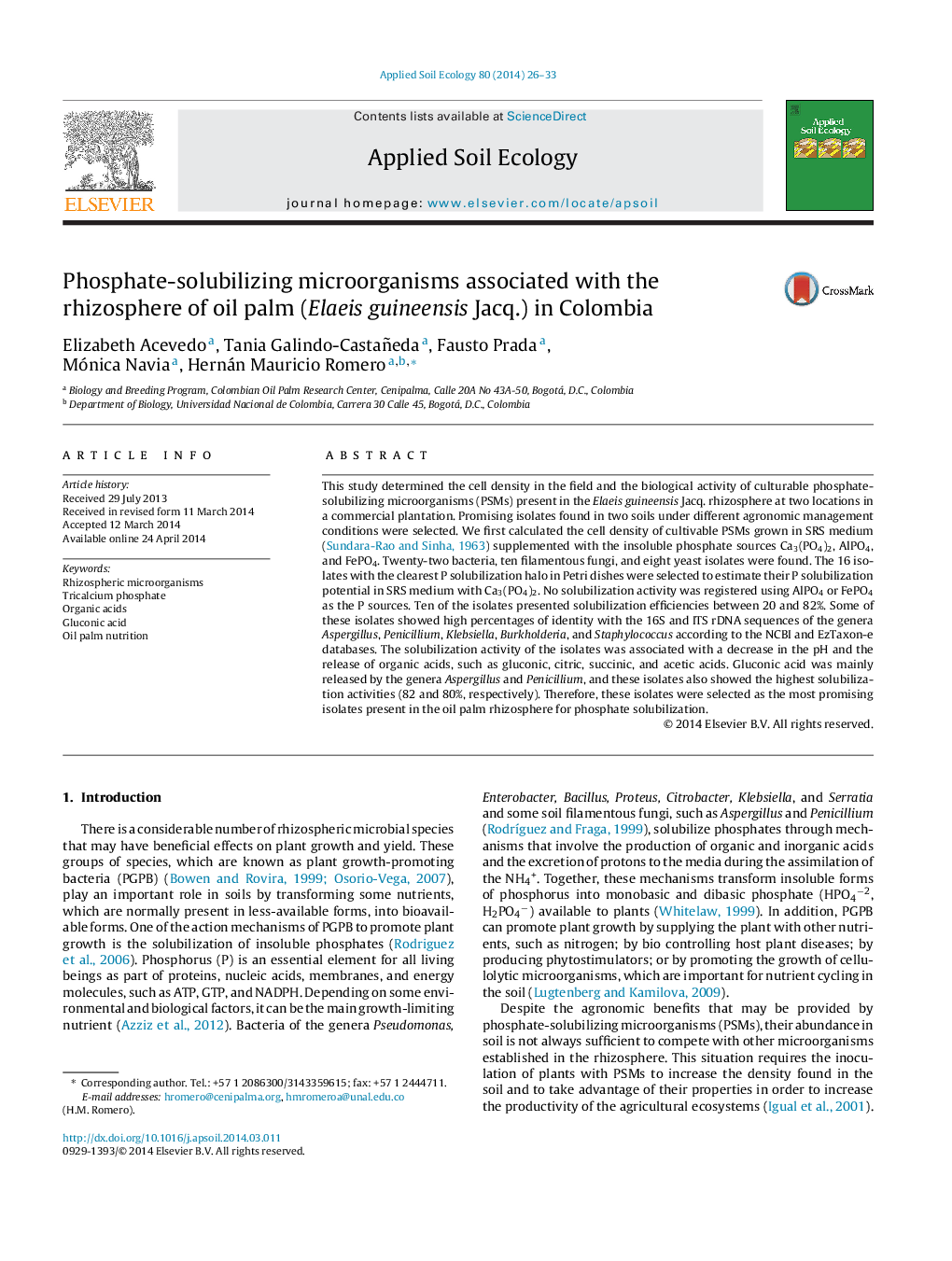| کد مقاله | کد نشریه | سال انتشار | مقاله انگلیسی | نسخه تمام متن |
|---|---|---|---|---|
| 4382129 | 1617803 | 2014 | 8 صفحه PDF | دانلود رایگان |

• Diverse phosphate-solubilizing microorganisms were isolated from oil palm rhizosphere.
• Isolates belong to genera Aspergillus, Penicillium, Klebsiella, and Burkholderia.
• Best isolates were identified as Aspergillus niger and Penicillium pinophilum.
• Microorganisms decreased the pH at the same time the solubilizing phosphate increased.
• Gluconic acid was the main organic acid released by these microorganisms.
This study determined the cell density in the field and the biological activity of culturable phosphate-solubilizing microorganisms (PSMs) present in the Elaeis guineensis Jacq. rhizosphere at two locations in a commercial plantation. Promising isolates found in two soils under different agronomic management conditions were selected. We first calculated the cell density of cultivable PSMs grown in SRS medium ( Sundara-Rao and Sinha, 1963) supplemented with the insoluble phosphate sources Ca3(PO4)2, AlPO4, and FePO4. Twenty-two bacteria, ten filamentous fungi, and eight yeast isolates were found. The 16 isolates with the clearest P solubilization halo in Petri dishes were selected to estimate their P solubilization potential in SRS medium with Ca3(PO4)2. No solubilization activity was registered using AlPO4 or FePO4 as the P sources. Ten of the isolates presented solubilization efficiencies between 20 and 82%. Some of these isolates showed high percentages of identity with the 16S and ITS rDNA sequences of the genera Aspergillus, Penicillium, Klebsiella, Burkholderia, and Staphylococcus according to the NCBI and EzTaxon-e databases. The solubilization activity of the isolates was associated with a decrease in the pH and the release of organic acids, such as gluconic, citric, succinic, and acetic acids. Gluconic acid was mainly released by the genera Aspergillus and Penicillium, and these isolates also showed the highest solubilization activities (82 and 80%, respectively). Therefore, these isolates were selected as the most promising isolates present in the oil palm rhizosphere for phosphate solubilization.
Journal: Applied Soil Ecology - Volume 80, August 2014, Pages 26–33